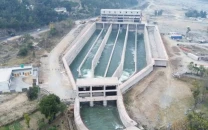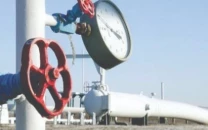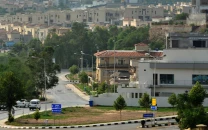Lack of storage facilities causes post-harvest losses
Despite a bumper vegetable crop, farmers are left to bear the financial brunt

A high agricultural yield in a land economy would naturally be seen as a positive development. However, in the absence of modern storage, processing and packaging facilities, having surplus production only leads to two unfortunate scenarios. Either the farmers have to sell the produce at bare minimum prices or let the excess vegetables go to waste.
After suffering losses in their wheat cultivation last year, a large number of farmers in Punjab decided to cultivate seasonal vegetables including peas, potatoes, cabbage, onions, tomatoes, garlic, carrots, and radish. As a result of the large-scale production, reduced local demand and low exports, the market prices for vegetables fell to their lowest in five years, leading farmers to suffer huge losses.
Ali Hamza, a farmer from Bhasin, had to bear heavy losses when he cultivated wheat on 10 acres of land last year. This year, however, he cultivated seasonal vegetables like peas, turnips, carrots, radishes and greens on five acres of his land. However, due to the decrease in the prices of vegetables in the market, he had to suffer losses this year too. "I suffered a loss of Rs300,000 in the cabbage and carrot crops alone. Instead of selling the cabbage in the market, I fed it as fodder to my cattle," said Hamza.
Similarly, Mian Afzal, a middleman in the vegetable market, revealed that the situation had also incurred losses to the middlemen who had to give advance payments to the farmers for planting vegetables. "Farmers repay the loan when the crop is harvested. Now, the farmers are not even being paid for the cost of harvesting the crop and bringing it to the market. How will they repay the money to the middlemen?" inquired Afzal.
According to Dr Anjum Ali Buttar, Former Director General of the Agriculture Department (Extension), Punjab, vegetable cultivation started early this season while the weather was also favourable, due to which the production of vegetables increased. "Furthermore, this year, vegetables, specially potatoes and cabbage, could not be exported from Punjab to Afghanistan, due to which the supply in the local market increased and their prices decreased," explained Dr Buttar.
Aamir Latif, a senior scientist at the Ayub Agriculture Institute, Faisalabad, a government institution researching vegetables, also agreed that the prices of vegetables had decreased due to the increase in their supply. "Last year, farmers did not get a fair price for wheat, therefore, this year they cultivated alternative crops, among which vegetables were at the top," said Latif. According to data obtained from the Punjab Agriculture Department, this year, 1.191 million acres less land was cultivated with wheat, while there was also a decrease in the area of cultivation for gram and green fodder in the Rabi season.
Furthermore, the cultivation of vegetables increased significantly, with the area of peas increased by 1.18 million acres (64 percent) and the area of potatoes by 1.18 million acres (15 percent). Similarly, the cultivation of onions increased by 10,800 acres (15 percent).
Progressive Farmer Aamir Hayat Bhandara claimed that since vegetables were perishable, their shelf life could be increased if modern facilities of processing, storage and cold chain were made available. "This eliminates the need for haste in delivering the produce to the market. Dehydrated vegetables are common all over the world since they remain fresh for a long time. Unfortunately, they are not popular among local consumers," said Bhandara.






















COMMENTS
Comments are moderated and generally will be posted if they are on-topic and not abusive.
For more information, please see our Comments FAQ